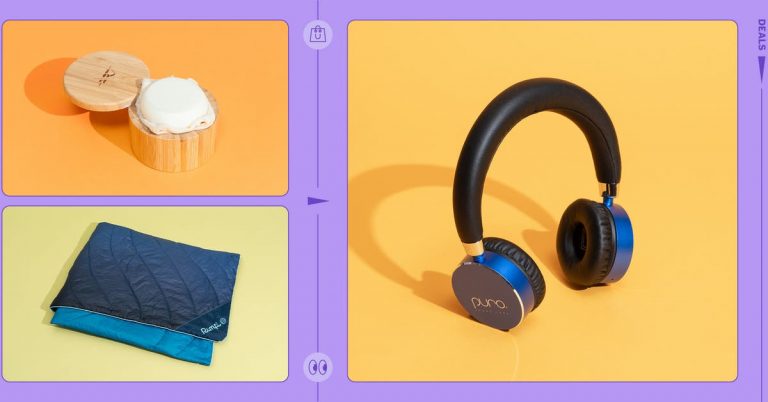The 2 Best Dry Food Storage Containers of 2025

A good dry storage container should be sturdy, airtight, simple to clean, and easy to scoop or pour from. It should stack easily, fit efficiently in kitchen cabinets, and come in a few sizes. We also looked for the following criteria in our tests.
Tight-sealing lids: An airtight lid helps containers protect cereal, grains, and snacks from staleness, and it keeps brown sugar or tender raisins from turning rock hard. It also helps keep out pests like pantry moths, which can squeeze through surprisingly small spaces and multiply rapidly.
Transparent: Clear plastic containers make it easy to take stock of what you have and how much of it. (It’s even better if measurements are marked on the outside.)
With opaque containers, you might have to go to the trouble of making labels, and you could still forget about those expensive heirloom beans you bought.
Of course, we made an exception when testing metal and ceramic containers in our search for plastic-free options.
Useful shapes: We looked for containers that would fit nicely in a kitchen cabinet or on a shelf, and we prioritized containers with an opening wide enough to easily scoop from with a 1-cup measuring cup.
A good range of sizes: You won’t find a consistent range of sizes from brand to brand, but we mostly tested containers that came in a size large enough to hold a 5-pound bag of all-purpose flour, which is somewhere between 4 and 5 quarts. For sets, we also looked for appropriately sized containers for a 4-pound bag of sugar and an 18-ounce bag of coffee.
Stackable: The experts were divided on whether containers should be able to stack easily. Toni Hammersley, author of The Complete Book of Home Organization, said stacking “can get in the way,” making ingredients “not as easily accessible.” Sarah Carey, editorial director of food and entertaining at Martha Stewart Living at the time of our interview, however, said it could be useful “if you have a lot of stuff.”
It’s good to have the option of stacking securely, especially if you have limited pantry space, but it wasn’t a requirement during testing.
Durable: Among the plastic and stainless steel containers we tested, we looked for models that didn’t shatter if dropped and didn’t warp in the dishwasher or bend unreasonably when we squeezed them.
Of course, glass and ceramic containers were exempt from this criteria — it didn’t feel fair when they were more than likely to break.
Easy to clean: Though you likely won’t need to wash dry storage containers often, we still preferred containers that were easy to clean, without tricky crevices. Ideally, both the lid and base should be dishwasher-safe, but we didn’t disqualify hand-wash-only sets, simply because dry food containers usually don’t need to be washed on a regular basis.
The only containers that meet all our requirements are made of plastic.
Glass, stainless steel, and ceramic containers typically don’t seal as well as plastic.
Storage containers in these materials also tend to be round, which makes it harder to Tetris them together in tight spaces, and they tend to be heavier than plastic containers, which could be an issue if you store your dry goods on a high shelf.
Stainless steel is the most durable of the three and won’t shatter when dropped, but the material is opaque, so you can’t see at a glance how much of an ingredient you have left.
Ceramic containers have the same opacity problem, but tend to be pretty enough to leave out on counters as functional decor. Glass containers are transparent and attractive enough to leave out, but they are easily breakable. Although we didn’t hold ceramic and glass containers to our drop-safe criteria, they will more than likely break if dropped.
Because of these traits, few of these non-plastic containers over the years have met our standards, but you can read our thoughts on the ones we liked best below.
How we tested
To test how tightly each plastic container sealed, we filled each partially with water, put the lid on, and turned it upside down. This is not a perfectly accurate test, since the pressure of water flowing out of a container is stronger than the pressure of air flowing in. But a lot of water leaking out is a pretty good indication that a lid is not tight enough to keep food fresh or pests out.
We put the lids on and took them off of all the containers multiple times, paying attention to how simple or hard it was to do so and looking for signs of wear.
We also filled each appropriately sized container with 5 pounds of flour and 4 pounds of sugar to see how easy it was.
Using multiple sizes of measuring cups, we tried scooping flour out of each container when it was full and when it was nearly empty.
To test sturdiness, we filled each container with beans and tapped them off the counter, cat-style, so they fell and hit the floor. We repeated this test multiple times to see if the containers were damaged or if the lids popped off.
In a previous round of testing, to find out whether the containers were bug-proof, we poured a powdered-sugar-and-water sludge into each container then left them outside overnight. We did this during springtime in rural Texas, a season notorious for an abundance of creepy-crawlies. The next day, we opened each container to inspect for bugs.
Due to environmental circumstances (winter in New York has a distinct lack of bugs), we skipped this test in our 2024 round of testing.
To see how well the containers kept food fresh, we filled each one with Goldfish crackers and tasted them periodically over the course of three weeks, noting which crackers were stale.






